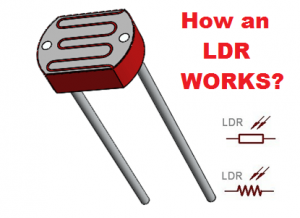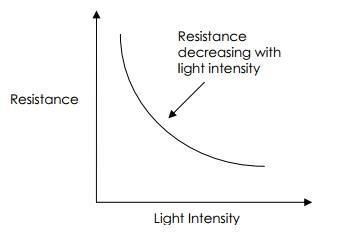Last updated on March 23rd, 2024 at 11:41 am
An LDR is a variable resistor that changes its resistance according to the intensity of the light falling on its surface. As light intensity increases the resistance of an LDR or light-dependent resistor decreases. Hence it is called a light sensor. In simple words, it is a type of sensor that senses the intensity of the surrounding light.
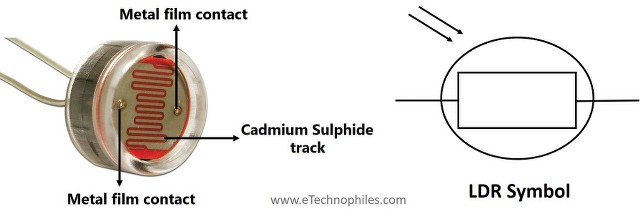
A photoresistor is another name for an LDR. It consists of “photo” meaning photons and “resistor” meaning a resistor. Thus, a photoresistor is a component whose resistance depends upon the number of photons that it receives.
Table of Contents
So in what fashion does its resistance change with light intensity?
LDR Resistance vs Light intensity
Resistance of an LDR is inversely proportional to the intensity of light that falls on its surface.
In other words, with an increase in light intensity, its resistance decreases. That’s why the graph between its resistance and the intensity of light is hyperbolic in nature.
Source: Kitronik.com
How is an LDR made?
Before jumping to its working we must know how it is made.
An LDR is made up of a high-resistance semiconductor having no P-N junction. Hence it is a passive component. One such semiconductor material is cadmium sulfide or CdS.
It can be made using either intrinsic semiconductors or extrinsic semiconductors. An LDR made up of the former is called an intrinsic photoresistor, and that of the latter is called an extrinsic photoresistor.
How does an LDR work?
- Since it is made up of a semiconductor, it exhibits all the properties of semiconductors. One such property is photoconductivity, i.e., the material becomes more conducting due to the absorption of electromagnetic radiations such as normal visible light and ultraviolet light, etc.
- Now we all know that the flow of electrons actually causes the flow of current in any metal. On the basis of the number of electrons that can flow through metals, they are categorized as insulators, conductors, and semiconductors.
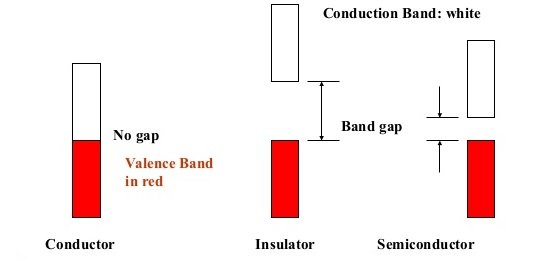
- This categorization depends on the energy gap between the conduction band and the valence band i.e. the amount of energy required for the electrons to jump from the valence band to the conduction band.
- For a semiconductor(assume LDR) this energy gap can be overcome by using a suitable intensity of light i.e, photons or photon-energy.
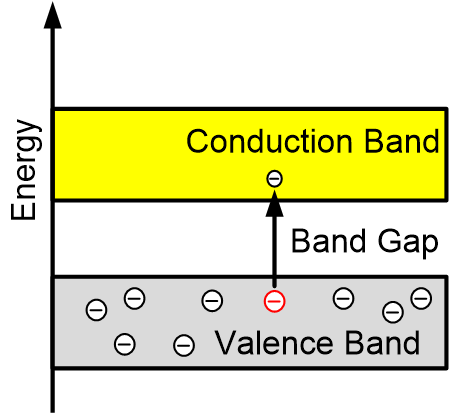
- The semiconductor material of an LDR is of high resistance.
- It is of high resistance because there are only a few electrons available for conduction.
- So when the light of a suitable intensity falls on it, some electrons jump from the valence band to the conduction band. This happens because electrons in LDR absorb the energy of photons.
- Now since some extra electrons are in the conduction band, more current flows through it, or the resistance decreases.
Hence on increasing the intensity of light that falls on the surface, more and more electrons jump from the valence band to the conduction band causing an increase in conductivity or decrease in resistance of the LDR.
FAQs
How many volts does an LDR need?
It can handle voltages up to 5V, but it is advisable to operate it at 3.3V to prevent potential damage.
Why a resistor is connected in series with an LDR while interfacing it with microcontrollers?
Resistors are used in series with light-dependent resistors when interfacing with microcontrollers to create a voltage divider circuit, facilitating precise measurement of varying light levels.
What is the basic principle of LDR?
It works on the principle of varying resistance with changing light levels. Its resistance decreases as the intensity of light increases, and vice versa.
